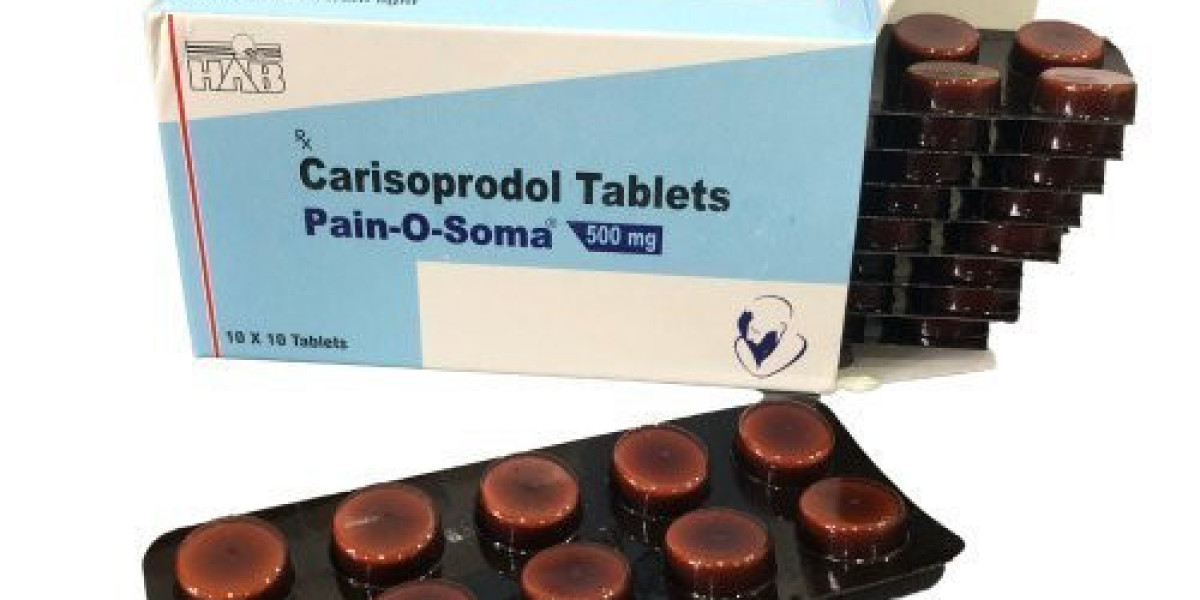Back pain – a ubiquitous ailment affecting millions worldwide – often sends individuals searching for relief. From conservative measures like rest and ice to more intensive interventions, the quest for a pain-free life can be a long one. Among the various pharmacological options, skeletal muscle relaxants frequently enter the conversation. But are these medications truly effective for back pain, or do they offer a temporary reprieve with potential drawbacks? This in-depth exploration will delve into the mechanisms, efficacy, and considerations surrounding skeletal muscle relaxants for back pain, providing a comprehensive guide for both patients and healthcare providers.
Understanding Back Pain: A Multifaceted Problem
Before we dissect the role of muscle relaxants, it's crucial to understand the nature of back pain itself. Back pain is rarely a singular entity. It can stem from a myriad of sources, including:
- Muscle Strain and Sprain: The most common culprit, often resulting from overuse, improper lifting, or sudden movements, leading to muscle spasms and inflammation.
- Disc Issues: Herniated or bulging discs can compress nerves, causing radiating pain, numbness, or weakness.
- Arthritis: Degenerative changes in the spine's joints can lead to inflammation and pain.
- Sciatica: Nerve compression in the lower back that causes pain radiating down the leg.
- Structural Problems: Conditions like scoliosis or spinal stenosis can contribute to chronic back pain.
- Underlying Medical Conditions: In rare cases, back pain can be a symptom of kidney stones, infections, or even tumors.
The diverse etiology of back pain highlights the importance of accurate diagnosis. A targeted treatment plan is far more likely to be effective than a generalized approach.
What Are Skeletal Muscle Relaxants?
Skeletal muscle relaxants (SMRs) are a class of prescription medications primarily used to treat acute musculoskeletal pain and spasticity. They work by affecting the central nervous system to reduce muscle tone and spasms. It's important to note that despite their name, most SMRs do not directly act on the muscles themselves. Instead, they exert their effects on the brain and spinal cord.
There are two main categories of skeletal muscle relaxants:
Antispasmodics: These medications are primarily used for acute, localized muscle spasms and pain. They work by depressing the central nervous system, leading to a general calming effect that can reduce muscle excitability. Common antispasmodics include:
- Cyclobenzaprine (Flexeril): One of the most frequently prescribed muscle relaxants, structurally similar to tricyclic antidepressants.
- Carisoprodol (Soma): Metabolized to meprobamate, a Schedule IV controlled substance due to its potential for abuse and dependence.
- Metaxalone (Skelaxin): Generally considered to have a lower sedative effect compared to other SMRs.
- Methocarbamol (Robaxin): Often used for acute painful musculoskeletal conditions.
- Orphenadrine (Norflex): An anticholinergic agent with muscle relaxant properties.
- Tizanidine (Zanaflex): An alpha-2 adrenergic agonist, primarily used for spasticity but sometimes off-label for acute back pain.
Antispastics: These medications are used to manage chronic spasticity associated with neurological conditions like multiple sclerosis, cerebral palsy, and spinal cord injury. They primarily work by targeting specific neurotransmitters or receptors in the spinal cord to reduce muscle hypertonicity. While not typically first-line for acute back pain, some, like tizanidine, can be used off-label. Examples include:
- Baclofen (Lioresal): A GABA-B receptor agonist that inhibits the release of excitatory neurotransmitters in the spinal cord.
- Dantrolene (Dantrium): Unique in that it directly acts on skeletal muscle, interfering with calcium release from the sarcoplasmic reticulum.
For the purpose of this discussion on back pain, we will primarily focus on the antispasmodic class, as they are more commonly prescribed for acute musculoskeletal conditions.
How Do Skeletal Muscle Relaxants Work for Back Pain?
The exact mechanisms by which antispasmodics alleviate back pain are not fully understood, but they are thought to involve a combination of central nervous system depression and indirect muscle relaxation.
- Central Nervous System (CNS) Depression: Many SMRs have sedative properties. By depressing the CNS, they can reduce nerve impulses that contribute to muscle spasms and pain perception. This generalized calming effect can lead to a perceived reduction in muscle tightness and discomfort.
- Interference with Pain Signals: Some SMRs may interfere with the transmission of pain signals in the spinal cord and brain, further contributing to their analgesic effects.
- Breaking the Pain-Spasm Cycle: Acute back pain often involves a vicious cycle: pain leads to muscle spasm, which in turn exacerbates the pain. By reducing muscle spasms, SMRs can help break this cycle, allowing for improved mobility and reduced discomfort.
It's important to reiterate that SMRs do not directly "relax" the muscles in the same way that a massage would. Their effect is mediated through their influence on the nervous system.
Are Skeletal Muscle Relaxants Effective for Back Pain? The Evidence.
The efficacy of skeletal muscle relaxants for back pain, particularly acute non-specific low back pain, has been a subject of numerous studies and reviews. Here's a summary of what the evidence suggests:
Acute Low Back Pain: For acute low back pain (pain lasting less than 6 weeks), several meta-analyses and systematic reviews have shown that skeletal muscle relaxants are generally more effective than placebo in providing short-term pain relief and improving functional status.
- Short-Term Benefit: Studies often demonstrate a modest to moderate short-term benefit in pain reduction and functional improvement within the first few days to two weeks of treatment.
- Superiority over NSAIDs (sometimes): Some research suggests that SMRs may offer comparable or even slightly superior short-term pain relief (Pain O soma 500mg) compared to non-steroidal anti-inflammatory drugs (NSAIDs) for acute back pain, especially when muscle spasms are prominent. However, this is not always consistent across all studies.
- Combination Therapy: SMRs are sometimes prescribed in combination with NSAIDs for enhanced pain relief in severe acute cases.
Chronic Low Back Pain: The evidence for the effectiveness of skeletal muscle relaxants in chronic low back pain (pain lasting more than 3 months) is much weaker.
- Limited Long-Term Efficacy: Most studies do not show a sustained benefit beyond a few weeks. The risks associated with long-term use (sedation, dependence, side effects) often outweigh the potential benefits.
- Focus on Multimodal Approach: For chronic back pain, a multimodal approach involving physical therapy, exercise, lifestyle modifications, and sometimes psychological support is generally recommended over sole reliance on medications.
Specific Types of Back Pain:
- Radiculopathy (Sciatica): While SMRs might offer some symptomatic relief, they do not address the underlying nerve compression.
- Mechanical Back Pain with Spasm: This is where SMRs are most likely to be beneficial, as they target the muscle spasm component.
Key Takeaway on Efficacy: Skeletal muscle relaxants can be a useful short-term adjunct for acute back pain, especially when muscle spasms are a significant feature. Their role in chronic back pain is limited and generally not recommended for long-term use.
Potential Side Effects and Risks
While offering relief, skeletal muscle relaxants are not without their side effects. It's crucial for patients to be aware of these before taking the medication:
- Central Nervous System Effects (Most Common):
- Drowsiness/Sedation: This is the most prevalent side effect and can significantly impair driving and operating machinery.
- Dizziness: Can increase the risk of falls, especially in older adults.
- Lightheadedness: Similar to dizziness.
- Confusion: Especially at higher doses or in sensitive individuals.
- Fatigue: Persistent tiredness.
- Gastrointestinal Effects:
- Nausea
- Upset Stomach
- Dry Mouth
- Other Side Effects:
- Blurred Vision
- Urinary Retention (less common)
- Cardiac Effects: Some SMRs (e.g., cyclobenzaprine) can have anticholinergic effects that may affect heart rate in susceptible individuals.
- Liver Toxicity: Rare, but some SMRs can be associated with liver enzyme elevations.
- Dependence and Abuse Potential: Carisoprodol (Soma) in particular has a significant potential for dependence and abuse and is therefore a controlled substance. Other SMRs can also lead to psychological dependence with prolonged use.
- Withdrawal Symptoms: Abrupt cessation of SMRs after prolonged use can lead to withdrawal symptoms, including anxiety, insomnia, and tremors.
Important Considerations and Warnings:
- Alcohol and Other CNS Depressants: Combining SMRs with alcohol, opioids, benzodiazepines, or other CNS depressants can lead to severe sedation, respiratory depression, and even coma or death. This combination is highly dangerous and should be avoided.
- Elderly Patients: Older adults are more susceptible to the sedative and anticholinergic side effects of SMRs, increasing their risk of falls, confusion, and other adverse events. Lower doses are often recommended, or alternative treatments preferred.
- Driving and Operating Machinery: Due to significant drowsiness and dizziness, patients should avoid driving or operating heavy machinery while taking SMRs until they know how the medication affects them.
- Pregnancy and Breastfeeding: The use of SMRs during pregnancy and breastfeeding should be carefully considered and discussed with a healthcare provider, as safety data can be limited.
- Pre-existing Medical Conditions: Patients with liver disease, kidney disease, glaucoma, urinary retention, or certain heart conditions may need dose adjustments or avoidance of specific SMRs.
When Are Skeletal Muscle Relaxants Prescribed for Back Pain?
Healthcare providers typically consider skeletal muscle relaxants for:
- Acute, Severe Low Back Pain: Especially when accompanied by significant muscle spasms that are not adequately controlled by over-the-counter pain relievers or NSAIDs.
- Short-Term Use: Prescribed for a limited duration (e.g., 2-3 days up to 1-2 weeks) to help break the pain-spasm cycle and facilitate early mobilization.
- As an Adjunct to Other Therapies: Often used in conjunction with rest, ice/heat, and initiation of physical therapy.
Conclusion
Skeletal muscle relaxants can be a valuable tool in the short-term management of acute back pain, particularly when muscle spasms are a prominent feature. They offer a modest but significant benefit in pain relief and functional improvement over placebo. However, their efficacy diminishes for chronic back pain, and their use is associated with a range of potential side effects, most notably sedation.
For anyone experiencing back pain, a thorough diagnosis from a healthcare professional is paramount. While muscle relaxants might offer a temporary reprieve, a holistic approach that includes physical therapy, exercise, and addressing underlying factors is key to sustainable relief and long-term spinal health. Always consult with your doctor to determine if skeletal muscle relaxants are appropriate for your specific condition, and to understand the potential risks and benefits. Self-medication or prolonged use without medical supervision is strongly discouraged. By understanding the nuances of these medications and embracing a comprehensive treatment strategy, individuals can take a more informed and effective path toward alleviating back pain and improving their quality of life.








